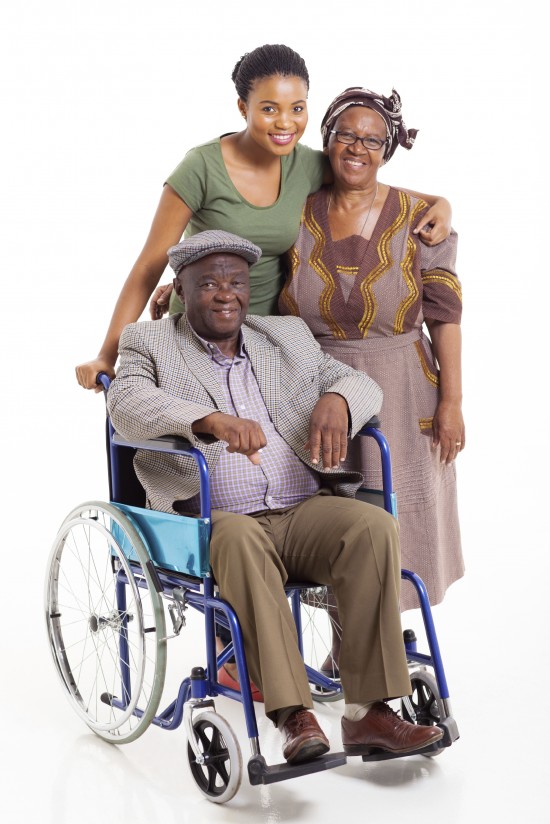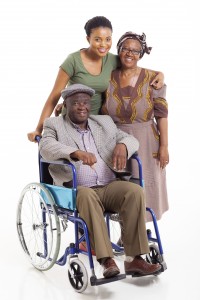Category: McKnight’s Long-Term Care News
Posted by Dr. El - October 8, 2019 - McKnight's Long-Term Care News


Last week I flew from New York City to Indianapolis to speak at a conference on severe mental illness in long-term care. From there, I drove to Chicago to offer my thoughts about behavioral health at a risk management event.
It wasn’t exactly a world tour, but I did come away with some interesting observations regarding our field.
My first stop was the severe mental illness (SMI) conference organized by the Indiana State Department of Health. The goal of this event was to improve care for Indiana residents diagnosed with SMI.
Nationally, rates of severe mental illness in LTC have doubled between 2000 and 20171. At 10%, Indiana has about an average number of SMI individuals, yet, with conferences like this, it’s leading the way in addressing this nationwide problem.
After recognizing that the mental health pendulum went too far in the direction of deinstitutionalization, Indiana has also revamped its psychiatric hospital system and increased the number of beds available, including geropsychiatric beds.
To see the number of residents with schizophrenia and bipolar disorder for your state, county and facility, create a map in one minute on LTCFocus.org, a fascinating, user-friendly Brown University website.
(By the way, I’m editing this article in my office on the rehab unit and a resident with bipolar disorder just stopped by for the third time this week — and it’s only Tuesday! As I was saying, it’s a national issue.)
One challenge that needs to be further addressed with regulators is how to comply with directives to avoid using individuals “for labor,” while at the same time allowing residents living with mental illness the opportunity to engage in meaningful, esteem-building activities.
Conference attendees told me, for instance, about a resident who enjoyed pulling weeds in the garden, but surveyors perceived this as problematic. Perhaps having more guidance and flexibility around volunteerism would help.
Posted by Dr. El - September 18, 2019 - McKnight's Long-Term Care News, Resident care

I was relieved last month when I saw that my fellow Psychologists in LTC member, Lisa Lind, Ph.D., had written an article for McKnight’s about Preparing for trauma-informed care in LTC. As McKnight’s resident behavioral health expert, I was feeling like I should write something on the subject, but I was struggling with how to do so given my apprehensions about it.
Now that Dr. Lind has provided a practical guideline, let us turn to what’s kept me up at night.
While I think it’s a good thing to pay more attention to the emotional experience of residents, I’m worried about how asking them about their traumas will be implemented in the field.
As a psychologist, residents talk to me about their painful past experiences every day. I’ve heard about children born of rapes, hidden abortions, violent childhood homes and all manner of intensely personal information, to which I was often the only one told after a lifetime of carrying a secret. It is a sacred honor to be the listener to a late-life unburdening and it comes after trust has been established over time.
Traumas are sensitive emotional wounds and I’m concerned that in their well-meaning efforts to comply with the new F-tag directives, staff members and surveyors will be poking these emotional wounds with a big stick.
There are many aspects of the situation which contribute to my uneasiness:
- Nursing homes are medically focused institutions. An in-service training or two won’t make up for the general lack of psychological training of the staff.
- Teams are still having difficulty identifying major triggers for psychological evaluation in the present day, such as an amputation or the death of a roommate.
- There are cultural and generational differences in comfort in discussing one’s personal life.
- There’s very little privacy in nursing homes. Roommates and residents seated near nursing stations and team rooms frequently overhear discussions of their peers’ personal information despite staff efforts at discretion.
For the entire article, visit:
Posted by Dr. El - August 27, 2019 - Boomers, Depression/Mental illness/Substance Abuse, McKnight's Long-Term Care News, Resident care, Younger residents

As I discussed in Severely mentally ill residents: A ‘perfect storm’ creates a SNF wave, long-term care has a growing population of severely mentally ill (SMI) residents, with the number of residents diagnosed with schizophrenia or bipolar disorder approaching 20% in some states as of 2017.1
In addition, 46.3% of LTC residents were diagnosed with depression in 2015 and 2016.2 Some were undoubtedly individuals with severe, chronic depression.
People with SMI generally enter nursing facilities for rehabilitation following a fall or some other health crisis. Discharge choices can be limited due to coexisting medical and mental health problems, leading them to become long-term residents despite their relatively young age (an average age of 62 versus 77 in the general nursing home population3).
A review of research on individuals with mental health problems, Physical illness in patients with severe mental disorders, finds that people with SMI have a greater likelihood of physical illness than those without SMI. The authors of the study note that “important individual lifestyle choices, side effects of psychotropic treatment and disparities in health care access, utilization and provision…contribute to these poor physical health outcomes.”
Their research suggests multiple points at which long-term care providers can intervene to assist SMI residents.
Medical assessment
Nurses and physicians can be taught to recognize health problems typical of the SMI population so that they’ll be alert to the increased risk of illnesses such as diabetes, metabolic syndrome, obesity-related cancers, cardiovascular diseases, osteoporosis, hepatitis B/C, tuberculosis, impaired lung function, poor dental status and other concerns.
Staff members who are comfortable physically assessing older residents might need additional training to be at ease evaluating SMI individuals, who may be more physically imposing because of their relative youth, come across as unfamiliar or frightening in their presentation or be themselves uncomfortable with medical tests or interventions.
For the entire article, visit:
Posted by Dr. El - August 18, 2019 - McKnight's Long-Term Care News


“There’s no one here to talk to,” a new resident, Claire, said to me, “They’re all so old!”
Claire was in her early 80s but thought of herself as two decades younger. She, like most residents I’ve encountered, have their own prejudices about aging and older adults. It negatively impacts them in a wide variety of ways, including in their long-term care experiences.
Social isolation
Residents may dismiss their peers due to their perception of them as old, infirm and uninteresting, keeping themselves isolated and preventing the opportunity to gain friends or at least “rehab buddies” who can support them through the taxing process of getting back on their feet again.
In busy, understaffed facilities (and what nursing home isn’t?), catalyzing resident engagement with one another isn’t just a nice thing to do, it can meet vital needs that staff members wish they had time for. With assistance in getting over their initial prejudices, residents can not only encourage one another, they can ease anxiety, mourn losses together and notify workers if a neighbor appears lethargic or depressed or about to fall.
All departments, not just recreation, can make efforts to connect like-minded individuals. One of my favorite things is to be a “matchmaker,” introducing women who enjoy similar activities or men who hail from the same county or country. Matchmaking can begin with something as simple as seating a potential friend next to someone’s “good” ear and commenting, “Did you two know you both … [fill in the blank]?”
Effect on adoption of mobility aids
Societal prejudices against growing old and “weak” keep many seniors from acknowledging their growing frailty. They may eschew tools such as canes, walkers or hearing aids because they “don’t want to look old”1 or be treated as such. Most of us in the business of long-term care recognize the irony that by avoiding these devices, elders are more likely to come through our doors. We might speculate that they’re also more likely to return once discharged.
In addition to training on residents how to use mobility aids, therefore, it may be beneficial to acknowledge and address the resistance that short-term residents might have to using these items upon their return to the community.
I’m thinking a short movie could do it.
For the entire article, visit:
Posted by Dr. El - July 31, 2019 - Customer service, McKnight's Long-Term Care News


Posing as customers, “secret shoppers” deliver the inside scoop to management about their experiences with various service providers. They can be invaluable to management in all kinds of situations, including long-term care, though there are special challenges there.
Secret shoppers are perhaps best known for retail settings. But they’re also used in hospital settings. A controversial recent New York Times article noted how faux patients arrive in emergency departments with contrived symptoms that allow them to observe the proceedings. The information provided is used to alter procedures and enhance training with the goal of improving customer satisfaction.
According to the article, “Undercover in a Hospital Bed,” personal details that explain poor customer service ratings can leave hospital executives “spellbound.” In one example, a secret shopper reported that staff members were dismissive of patient concerns and squabbled among themselves. Poor teamwork made her doubt the quality of the care she was receiving.
The findings inspired the hospital to create and train employees on new norms of staff behavior, including staying off cell phones and learning more about the lives of the people presenting for care. Obvious long-term care parallels can be assumed, but there’s more.
Reactions
There were a wide variety of comments on the New York Times piece. Hospital insiders affirmed the necessity and benefit of this stealth approach. Others deplored the waste of resources used on the deception. A few pointed to statistics indicating that what customers might consider good service could actually result in poorer clinical care. (Think: I’m so happy they gave me that opioid I wanted.)
Workers fumed that their own opinions weren’t solicited. They were also concerned about superficial fixes such as pushing employees to plaster smiles on their faces without investigating and correcting the reasons that they weren’t smiling in the first place.
My take is that while workers have valuable information regarding the patient experience, they’re not always in a position to reveal it and management isn’t generally receptive to worker commentary. If the leadership team uses the information gleaned from the brief deception of a secret shopper to make underlying changes that positively impact patients and employees, then the strategy is a valuable tool.
Application to LTC
Those interested in the idea will note, however, that it’s easier to pose as a hospital patient than it is to be a mock nursing home resident.
Posted by Dr. El - July 25, 2019 - Business Strategies, Customer service, McKnight's Long-Term Care News

The other day over lunch a colleague said to me, “Imagine how things would change if toileting were a billable service.” I laughed, briefly considered that fanciful notion and continued eating my meal.
As I gave the idea further reflection, however, it might not be as laughable as it first appears.
Consider the following:
Funding
Remuneration for toileting would mean that aides would hold income-generating positions. We’d expect that nursing departments would become fully staffed in order to take advantage of this new funding stream and that compensation for aides would increase.
Respect
We might also anticipate that CNAs would become more highly valued for their services by others in the facility.
Philosophical shift
Direct payment for the tasks of aides would strengthen incentives for employers to support ways for employees to manage their jobs around their lives, which often entail demanding family caregiving responsibilities.
Retention programs/employee benefits
The funds could be used to develop retention efforts such as flexible schedules, onsite daycare, financial contributions to staff education and other employee benefits.
Training
Increased remuneration for personal care would lead to more resources for training and for creating programs that promote the development of CNAs, such as peer mentorships.
For the entire article, visit:

Posted by Dr. El - July 5, 2019 - McKnight's Long-Term Care News, Resident care


It’s the week of Independence Day and freedom is on my mind. Residents frequently speak to me of their dissatisfaction with the limitations on their liberty, from being told to sit in a communal room when they want to be alone, to needing a family member to sign them out on pass.
“Me and the other inmates,” they say, trying to use humor to cope with their confinement.
Constraints on residents are generally due to a combination of factors, first and foremost being the physical and/or cognitive impairments that led them to require rehab or nursing home care. Psychotherapy often addresses residents’ feelings about having become ill through aging, accidents, life choices and other circumstances and it can reduce some of the blame of the nursing home for curbing their freedom.
It must be acknowledged, however, that there are many aspects of long-term care itself that limit residents, including the facility’s desire to protect residents from harm and themselves from litigation, regulatory requirements, risk-avoidance policies and routines (because “that’s the way it’s always been done and we keep passing surveys”) and inadequate staffing.
As we celebrate our freedoms in the country this week, perhaps we can consider ways in which to create a better balance between the need to provide a safe environment for residents and their right to make their own choices.
Below are just a few of the many aspects of care that could be adjusted for increased autonomy:
- Reevaluate practices that restrict residents as a matter of routine and consider instead ones that are based on their capabilities. For example, rather than disallowing all motorized wheelchairs, offer the opportunity to residents who are found to be physically and cognitively capable, pass a periodic “driver’s test” and follow established guidelines for use.
For the entire article, visit:
Posted by Dr. El - June 14, 2019 - Business Strategies, McKnight's Long-Term Care News, Talks/Radio shows

 I’ll be speaking about Behavioral Health in Senior Living at McKnight’s free Online Expo at 11am ET on Thursday, 6/20. To register for the virtual Expo, see the info below.
I’ll be speaking about Behavioral Health in Senior Living at McKnight’s free Online Expo at 11am ET on Thursday, 6/20. To register for the virtual Expo, see the info below.
McKnight’s Online Expo, FREE, Thursday June 20th
Earn 3 Free CEUs at 3 Free webinars
Finally, a virtual trade show just for senior living professionals! During this one-day event on June 20, you’ll hear from dynamic speakers with great ideas about the senior living issues that matter. This is the show you’ve been waiting for and you don’t even need to leave your desk to attend!
Register for the conference in advance, and then log in to hear the talks, visit the vendors, and chat with the reps and attendees.
This year’s topics are:
- Behavioral Health in Senior Living: Improving Practices, Reducing Risk
- Mobile Tech: Friend or Foe in the Senior Living Workplace?
- The Talent War: 3 Strategies for Winning in Today’s Competitive Market
To register, go to: www.mcknightsseniorliving.com/June20Expo
Posted by Dr. El - June 6, 2019 - Depression/Mental illness/Substance Abuse, McKnight's Long-Term Care News, Stress/Crisis management

Here’s my latest article on McKnight’s Long-Term Care News:

Last week, New Zealand passed the country’s first “well-being budget,” with billions in funding directed towards mental health, suicide prevention, addiction treatment and combatting poverty. This development had me considering what a “well-being budget” would look like in long-term care facilities.
Reducing financial hardship
Combating poverty in nursing homes would have to address adequately funding treatments so that facilities are bringing in enough money to cover the expense of services as well as to manage upkeep and comply with regulations. It’s difficult for a business to engender well-being when under the threat of insolvency.
At the same time, any effort to reduce poverty in long-term care would certainly require living wages and reasonable benefits for workers at all levels. That would make it more likely that facilities could attract and retain capable staff.
A well-being budget would also need to increase the Personal Needs Allowance (PNA) of residents to account for inflation. While a few states have provided modest increases in resident’s monthly allowances over the years — with Florida the trailblazer at $130 – most have remained the same for decades1. In my state, New York, for example, the PNA was set at $50 in 1980. Adjusting for inflation would make New York’s PNA $155 in 2019, a more reasonable amount considering that residents are responsible for paying for their own clothes, haircuts, telephones and other personal items and have become impoverished in order to qualify for Medicaid. Sadly, however, it is still $50.
Worker well-being
To improve the mental health of those who live in nursing homes, my well-being initiative would first tend to the mental health of those who work in long-term care. If employees aren’t emotionally well-balanced, it’s much more difficult for their charges to be.
For the entire article, visit:

Posted by Dr. El - May 25, 2019 - McKnight's Long-Term Care News, Transitions in care

Here’s my latest article on McKnight’s Long-Term Care News:

In McKnight’s Long-Term Care News this month, there was a report on a study examining factors that contribute to transfers of frail residents from skilled nursing facilities to emergency departments.
Using focus groups of residents and family caregivers, researchers found four main contributors to the transfers: “(1) doubts about the quality of skilled care facility nurses’ assessments; (2) perceptions that physicians were absent from the nursing home; (3) misunderstanding the relative capabilities of skilled care settings and emergency departments; and (4) beliefs that responses to medical needs were inadequate.” In addition, the lead author found that some of the transfers were due to a lack of acceptance on the part of family members that their relative was near the end of life.
The study authors stated that telehealth could address some of these factors. While that may be the case, my experience suggests that there are additional ways in which facilities can address family concerns and reduce potential hospital transfers. These center on educating residents and families, and on setting reasonable expectations.
One of the most frequent discussions I have with residents and families is regarding their impression that they “never see the doctor.” As I point out in my book, “The Savvy Resident’s Guide,” the nurses notify the doctor if there are any problems. I tell residents that because the doctor visits mainly when something is wrong: “If you’re not seeing the doctor, it’s a good thing.” This shift in perception can make a huge impact, whether it’s conducted via a one-to-one conversation, a book or some other communication method.
One of the contributors to mistrust is that the families of short-term residents tend to be in crisis and to have dealt with a multitude of healthcare providers prior to admission. They are often being pulled in many directions and don’t know whom to rely upon for good care of their relative.
In a previous column, “7 powerful ways to deliver family-centered care,” I noted that if we considered that we’re admitting families rather than residents, we’d put additional focus on family members. People turning to healthcare professionals in the middle of a personal catastrophe will be more likely to trust those who recognize their moment of crisis and treat them accordingly. Sometimes even small things like being offered a cup of tea while filling out paperwork can create a feeling of safekeeping for them and their loved one. See the above-mentioned article for ideas on family-centered care.
For the entire article, visit:





 What worries me about trauma-informed care
What worries me about trauma-informed care










 I’ll be speaking about Behavioral Health in Senior Living at McKnight’s free Online Expo at 11am ET on Thursday, 6/20. To register for the virtual Expo, see the info below.
I’ll be speaking about Behavioral Health in Senior Living at McKnight’s free Online Expo at 11am ET on Thursday, 6/20. To register for the virtual Expo, see the info below.



